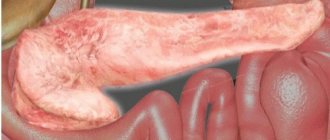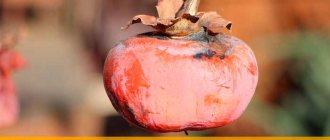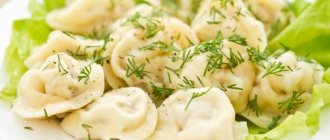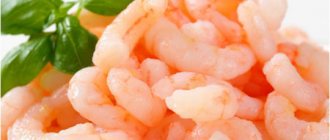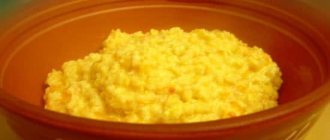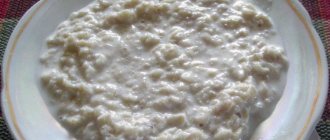Pancreatitis is a fairly specific disease, which is an inflammatory process localized in the pancreas. When treating the disease, it is necessary to follow a diet and avoid certain foods that may aggravate the patient's condition.
There are often disputes about whether it is possible to eat mushrooms with pancreatitis? Many people love the product, but is it allowed for this disease and what could be the consequences if it is constantly used?
Is it possible to eat mushrooms with pancreatitis?
There is a lot of debate about whether it is possible to eat mushrooms with pancreatitis? Endocrinologists and nutritionists categorically prohibit eating mushrooms during periods of exacerbation of the disease and during intensive therapeutic treatment. During periods of remission, when the latency of the disease is observed for 2-3 months, mushrooms and dishes made from them are gradually introduced into the patient’s diet.
Mushrooms are a unique plant product, which in terms of protein content, nutrients, essential amino acids is equal to meat. Mushrooms do not contain fats and are low in calories, but due to the quantitative composition of nutrients they lead to rapid saturation, after which the feeling of hunger does not occur for a long time.
This dietary product is part of many therapeutic diets, but in case of inflammation of the pancreas, doctors impose a ban on eating mushrooms. For all their beneficial properties, mushrooms contain large amounts of chitosan.
It is a complex polysaccharide, a natural polymer, whose properties are similar to microcellulose. Its peculiarity is that it is difficult to digest in the gastrointestinal tract and is excreted unchanged, having absorbed toxins, carcinogens and heavy metal salts.
During periods of exacerbation of the disease, mushrooms and dishes made from them are strictly prohibited. When stable remission occurs, during the latent period, mushroom dishes and broths can be introduced into the diet.
Mushrooms in the diet during exacerbation of the disease
Is it possible to eat mushrooms with pancreatitis? Despite the valuable qualities of the product, they must be eliminated from the diet of a patient with pancreatitis. This is due to the presence of substances in the mushrooms that are incompatible with the characteristics of the disease, as well as to the dynamics of processing the product by the digestive organs. The diet for pancreatitis is developed according to the medical diet “Table No. 5”, aimed at maximum unloading of the affected pancreas.
The main criterion for choosing products is their ease of digestibility and absorption by the body. Hot spices and sauces, fried foods, fats, marinades, and coarse fiber are eliminated from the menu. Mushrooms, methods of their culinary processing and products combined with them do not meet the requirements of the dietary table and are excluded from the menu. Especially during recurrent periods of the disease.
First of all, the ban on mushrooms is due to the content of chitin (chitosan) in them. This is a biopolymer (that is, a polymer of natural origin) related to polysaccharides. In structure and functionality, chitin is similar to cellulose. The beneficial properties of chitosan lie in its ability to bind and remove toxic waste, heavy metals and carcinogens from the body. At the same time, the organs of the digestive system are not able to process the rough structure of the substance, so it is excreted unchanged.
Being in correlation with proteins and carbohydrates, chitin is able, along with harmful decay products, to “grab” and remove nutrients valuable for life. During the period when chitosan is in the body, there is an intense accumulation of gases, severe pain, a feeling of fullness, vomiting, and an increase in body temperature. Even a small amount of mushrooms eaten can worsen the patient’s condition to the point of emergency hospitalization.
Reference! Most of the chitosan accumulates in the mushroom stem. The cap contains several times less of this substance.
The second obstacle to eating mushrooms for pancreatitis is the presence in their composition of the secretion of special glands of the plant (essential oils). Aromatic substances provoke polygapia (increased appetite), and activate the exocrine (exocrine) function of the pancreas to produce pancreatic juice.
In a chronic inflammatory process, this is unacceptable, since the process of outflow of juice into the duodenum is disrupted. Unspent juice destroys the cells of the gland itself, increasing inflammation and symptoms of the disease. In addition to the absolute reasons why it is forbidden to eat mushroom dishes, there are relative (relative) contraindications.
First of all, there is the danger of poisoning from inedible mushrooms. Intoxication of the body against the background of chronic pancreatitis is very difficult, threatening the patient with death. In addition, mushrooms are a highly allergic product. People with hypersensitivity often develop an immunopathological process as a reaction to the fungal composition.
Not recommended products
With pancreatitis, the inflamed pancreas stops producing the required amount of enzymes required to digest food. Therefore, there are a number of foods that doctors do not recommend eating for this disease. The following are strictly prohibited:
- fatty meats - pork, lamb, duck;
- liver of any animals and birds - this product contains extractive substances that lead to increased appetite and increase the production of enzymes, loading the pancreas;
- fatty fish - these include herring, salmon, mackerel (the consumption of canned fish is prohibited);
- sausages and smoked meat products;
- spicy dishes or with a lot of spices;
- pickled and salted vegetables;
- eggs - raw yolk is especially dangerous, as it causes increased bile secretion, which is an irritant to the pancreas.
Restrictions for pancreatitis apply to some cereals (barley, millet), drinks (carbonated, strong black tea, coffee, cocoa, hot chocolate). Vegetables can only be consumed boiled, baked without oil or steamed.
Why are they dangerous for pancreatic inflammation?
While the controversy surrounding the benefits and harms of mushrooms does not subside, nutritionists still advise refraining from consuming this product if you have pancreatitis or cholecystitis. Doctors base their advice on several circumstances:
- Contains a dangerous element – chitin. This component of the product is somewhat similar to very coarse fiber, but is not absorbed at all, passing through the body in “transit” and unnecessarily loading the gastrointestinal tract. Chitin can cause flatulence, pain and heaviness in the epigastric region.
- Rich in essential oils and terpenes. These components give mushrooms that special aroma for which gourmets love the product so much. But esters have too active an effect on increasing appetite and the secretion of pancreatic juice. And this is another extra burden on the already weak pancreas.
Fried or pickled mushrooms are especially dangerous. These are too heavy dishes even for a healthy pancreas. They can cause gastrointestinal illnesses due to the fat, vinegar and seasonings used to season the dish.
The right choice of mushrooms for pancreatitis
Doctors are also ambivalent about eating mushrooms for pancreatitis. With a meager diet, the patient’s body must receive all types of vitamins, minerals and vital substances.
In this case, mushrooms act not as food, but as a storehouse of micro and macroelements. The main thing is to determine which mushrooms are safest for health.
Among mushrooms, there is one species with the lowest content of chitin and essential oils. These are champignons. When choosing mushrooms, it is necessary to take into account that the caps are considered the safest; they have a lower content of heavy metals and chitin. Mushroom stems tend to accumulate harmful substances from the soil and atmosphere, so they should not be eaten if you have pancreatic disease.
About mushrooms
Mushrooms are a unique plant organism, classified in botany as a separate kingdom. The quantitative composition of nutrients (proteins, fats, carbohydrates) and energy value vary depending on the type of mushroom. In general, this is a low-calorie product containing fats, a lot of proteins, and complex carbohydrates (in particular, fiber). The protein component provides the mushroom composition with a whole complex of essential amino acids.
Reference! The calorie content of dried mushrooms, in comparison with a fresh product, increases on average 8–9 times.
| Minerals | Vitamins |
| copper | retinol (A) |
| zinc | ascorbic acid (C) |
| manganese | Niacin (B3 or PP) |
| potassium | ergocalciferol (D2) |
| calcium | thiamine (B1) |
| iron | riboflavin (B2) |
| phosphorus |
For a healthy body, eating mushrooms brings unconditional benefits. Due to the abundant amount of proteins, fiber, vitamins and minerals in their composition, mushrooms are included in numerous medicinal diets. Low energy value is the basis for the presence of the product in dietary nutrition aimed at weight loss.
Mushrooms have exceptional taste. In the culinary arsenal you can find fried, boiled, baked, salted and pickled mushroom variations. They are used to prepare first and second courses, fillings for pancakes and pies, and gourmet snacks.
The effect of mushrooms on the pancreas
According to nutritionists, mushrooms are difficult food for the pancreas. Chitin, which is not absorbed in the gastrointestinal tract, puts a large burden on the pancreas. This is due to the fact that chitin has a coarse fiber structure, for the digestion of which the pancreas strives to release more gastric enzymes.
With pancreatitis, chitosan contained in mushrooms causes the patient to accumulate gases in the intestines, which leads to severe pain, vomiting, and increased body temperature. Therefore, not only the mushrooms themselves, but also broths based on them are especially dangerous during relapses of the disease.
Medicinal properties
Both folk and official medicine recognize the presence of medicinal properties in some types of mushrooms. Thus, doctors agree that consuming porcini mushroom is beneficial for people with diabetes. The chromium contained in the product successfully replaces the need for sweets.
The folk method of getting rid of cravings for alcohol with the help of dung beetles has long been known. Dried chanterelle powder is used to prevent gastrointestinal diseases.
Modern pharmacology uses mushroom powders as raw materials for the treatment of various pathologies:
- medicines with chaga calm the nervous system and reduce pain due to cancer;
- epilepsy and tuberculosis are treated with drugs based on clitocybe (popularly called talker);
- raincoats are used in the treatment of kidneys and cholelithiasis;
- thanks to the alkaloid herceptin, extracted from porcini mushrooms, they successfully fight angina pectoris.
Home remedies made from ground dried ingredients are popular. For example, a tincture of summer mushrooms is used as an antibacterial drug, and a tincture of honey mushrooms is used against migraines.
The danger of fungi in pancreatitis
Doctors explain the danger of mushrooms in pancreatitis by their complex chemical composition. The following components of mushrooms can cause harm to a sick body:
- Coarse fiber is a structural component of chitosan.
- Essential oils - the aroma that mushrooms emit are caused by special chemical compounds. Essential oils stimulate appetite and stimulate pancreatic secretion.
- Radionuclides – they accumulate and concentrate in mushrooms. Almost all mushrooms are an absorbent “sponge” for toxic and radioactive substances in the soil and air.
Most often, mushrooms are fried and served with sour cream, which is strictly prohibited in case of pancreatic disease - all fats have a detrimental effect on the inflamed pancreas.
Poisoning with low-quality mushrooms can cause serious consequences; with pancreatitis, the processing functions of the gastrointestinal tract are weakened and poisons are absorbed into the blood in their pure form.
Mushroom soups for pancreatitis
Many patients often ask the question: is it possible to eat mushrooms if there are pancreatic disorders? The answer to this question is clear.
When drawing up a dietary menu for a patient with pancreatitis, the benefits of the ingredients are primarily taken into account, and not their taste. When treating this disease, it is very important to prevent relapse and reduce the load on the digestive organs.
If we consider mushrooms from the point of view of dietary value, then their main advantage can be called low calorie content. But, in turn, this product belongs to heavy food, which means its use in the acute stage is strictly contraindicated. Mushrooms are also highly extractive, which increases the production of pancreatic enzymes. Therefore, mushroom soup can cause nausea, burning, and possibly pain.
source
Rules for cooking mushrooms for pancreatitis
Taking into account all the recommendations of doctors, and taking into account the danger that mushrooms can pose, you must follow the rules for preparing mushrooms:
- eat only caps;
- thoroughly clean the caps from the top, leathery layer;
- mushrooms can only be boiled; eating fried, salted or pickled mushrooms is not allowed;
- Cooking time should be at least 1.5 hours.
You need to cook the mushrooms in 2 stages. The first is to place the peeled mushrooms in cold water, bring to a boil and cook for 25-30 minutes. Then drain this water, rinse the mushrooms and place them in boiling water.
Continue cooking for 1 hour.
Risk of poisoning
In addition, there is always the possibility of mushroom poisoning. Certain inedible and poisonous mushrooms are capable of excessively masquerading as edible ones, and if they are collected by people who are not very knowledgeable about such things, then the percentage of the danger of poisoning only increases.
Various toxic substances can accumulate in mushrooms, which can only worsen the course of the disease.
In addition, an accidentally collected inedible mushroom, when cooked with all edible ones, will poison the entire dish. Therefore, you should be very careful when picking mushrooms and preparing them. It is better to soak and cook in water with a large onion first. If the onion has acquired a blue or purple tint, the mushrooms cannot be used for food.
Delicious recipes
Champignon julienne with cheese crust
This delicious dish can be prepared for a festive table. Julienne is served in individual cocotte makers. To prepare 4 servings you will need:
- champignon caps – 400 gr.;
- cream (low-fat) 120 ml;
- white onion – 1 turnip;
- hard cheese – 100 gr.
You need to prepare the onions and champignons - chop them into small slices and cubes. The mushrooms are boiled separately until fully cooked. Sauté the onion in a frying pan until golden brown, then pour in the cream, stirring. Boiled champignons are combined with sauce and placed in molds (cocotte makers).
Sprinkle each serving with grated cheese. Place the cocotte makers on a baking sheet and place in the oven to bake for 5 minutes until the cheese melts.
Serve the julienne hot, sprinkled with chopped dill.
Mushroom bits (oven recipe)
A dietary dish of champignons, prepared with a minimum amount of oil. To prepare 4-5 servings you will need:
- champignons – 600-700 gr.;
- rice (dry) – 200 gr.;
- onion – 1 medium onion;
- garlic – 2-3 cloves;
- egg – 1 pc.;
- hard cheese – 100 gr.;
- ground pine nuts or walnuts – 2 tbsp. spoons;
- wheat flour (for dredging) – 2-3 tablespoons;
- vegetable oil – 1-2 tablespoons;
- greens (dill, basil) - 2-3 sprigs;
- table wine – 150 ml;
- mushroom broth – 350 ml;
- salt, pepper to taste.
Boil the mushrooms until tender, drain the broth. Finely chop the champignons and onions. In a frying pan or in a saucepan with a thick bottom, sauté the onion until soft, then add rice, nuts, pour in the wine and broth, and simmer until the rice is ready.
Stir finely chopped champignons, chopped herbs into the prepared cooled mass, beat in an egg, add crushed garlic, salt and pepper. Mix the mixture thoroughly and form it into balls. They need to be breaded in flour. Line a baking tray with paper or a baking mat.
Place the meatballs and place in the oven. Bake for 20 minutes at 170-180°C.
Light vegetable soups
Recipes for dietary soups for pancreatitis are quite varied, but light soups from various vegetables are most often used in the daily menu. Let's look at the most popular of them.
Potato soup
Light potato diet soup is prepared using vegetable broth, which can be prepared in advance and stored in the freezer.
- For two liters of broth you need to take two medium carrots, an onion, 4-5 potato tubers, one tomato, parsley or celery root, and greens.
- Finely chopped vegetables (except potatoes and tomatoes) need to be stewed a little in a small amount of broth with the addition of butter.
- Then place the finished mixture in the heated broth and bring to a boil.
- Diced potatoes and tomatoes are also added to the soup, at the same time it needs to be salted.
- In 20 minutes the dish will be ready. The soup is served with sour cream and herbs.
The purpose of the diet for pancreatitis
The main goal of the diet is to restore the functions of the pancreas. Nutrition during the period of exacerbation of pathology should help relieve pain. In the first 1-2 days, food is completely excluded, the method of therapeutic fasting is used, and you are allowed to drink water and green tea.
When the acute period has passed, a diet based on “Table No. 5” is used. This diet helps relieve inflammation of the pancreatic duct. Along with drug treatment, dietary nutrition helps relieve swelling of the gland.
Treatment of chronic pancreatitis
The chronic form is more dangerous than the acute form, which, if treated in a timely manner, can pass without long-term consequences for the body: the functions of the pancreas can be fully restored. The chronic form is more insidious: even with the weakening of symptoms (and with chronic pancreatitis, acute forms and remission usually alternate), there is a constant decrease in the functionality of the organ.
- Diet. First of all, you should look at the amount of food you eat: overeating during an exacerbation can literally be fatal. Of course, the composition of products is also subject to revision. Fatty and spicy foods are prohibited (the percentage of fat is kept to a minimum), as well as dishes prepared by stewing or frying (only steamed or boiled are allowed). The consumption of fermenting carbons (sugar, honey) is limited. Not even all fruits and vegetables are allowed: it is recommended to abstain from those crops that contain too much fiber (such as legumes). Alcoholic and tonic (coffee) drinks are strictly prohibited.
- Drug treatment. Drugs are used that relieve pain, suppress pancreatic secretion, fight bacteria, and replenish the water-salt balance in the body. Our medicinal mushrooms are in many ways analogues of chemical drugs.
- Surgical intervention. Inevitable in case of acute persistent pain, the appearance of tumors, or the presence of cysts. There are direct and indirect methods. In indirect operations, the stomach, bile ducts, and intestines are exposed; in direct operations, the surgeon works directly with the pancreas, removing cysts or, in the most severe cases, performing a complete resection of the organ.
- Treatment with folk remedies. To prevent exacerbations (with chronic pancreatitis), herbal preparations, as well as medicinal mushrooms, are used. Let's focus on describing the treatment of pancreatitis with mushrooms.
If your illness worsens, you should never eat mushroom dishes due to the following factors:
- High level of chitin content in the cell wall of the product. It is unable to be fully digested and causes flatulence and painful spasms. Chitin disrupts the absorption of proteins and other microelements.
- Highly extractive dishes. Such foods help stimulate the production of gastric juice and the secretion of pancreatic enzymes. Gradually, the patient experiences severe attacks of nausea, the urge to vomit and paroxysmal pain in the abdominal area.
It is important to wash mushrooms thoroughly before eating.
Diet in the acute stage of the process
During the period of exacerbation and in crisis moments of the disease, therapeutic fasting for several days is recommended. The patient takes antispasmodics and painkillers, so he is allowed to drink water, vegetable broths, and alkaline mineral waters.
After the acute phase has passed, you can carefully introduce well-cooked porridges from soft types of cereals (rice, semolina, oatmeal), and cereal-based jelly into the diet. Meals should be at least 5-6 times a day. Such fractional meals do not burden the gastrointestinal tract and do not cause increased secretion of enzymes.
Eating mushrooms in the acute stage is strictly prohibited.
Recipes that will be useful for pancreatitis
It is worthwhile to dwell in more detail on the description of the recipes for some soups. What soup recipes for pancreatitis should you pay closer attention to?
Classic potato soup
The recipe for vegetable soup for pancreatitis, including potato soup, is very simple to make; even a child knows how to prepare such a soup.
It is prepared as follows:
- Peel 2 small carrots, wash thoroughly and grate. For those who don’t like grated carrots, cut them into cubes or half rings. Peel, rinse and cut 4 potatoes into cubes.
- Place the vegetables in a saucepan, fill with water and place on the gas stove.
- Finely chopped fresh parsley will help add additional aroma and interesting taste to this dish (grated dried parsley is also suitable).
- The dish needs to be cooked until cooked, at the very end add two raw eggs and mix well.
Cauliflower broth
The preparation of the dish is quite simple:
- Chop the leeks.
- Onions and carrots need to be chopped and grated accordingly.
- Cut several large potatoes into strips and set them to boil.
- Add a pound of cauliflower and any vegetables or herbs to taste.
- Add some salt and bring to a boil. Only 2 small pinches of salt per pan of product are allowed.
You can eat it just like that, or you can add sour cream to it.
Borscht for pancreatitis
Borscht is the favorite soup of many people, and fortunately, if you get sick, you don’t have to give up borscht, you just need to know how to prepare it correctly.
- 4 small beets need to be boiled, peeled, grated and simmered in a frying pan along with chopped onions. There is no need to add oil; replace it with water.
- Place 2-3 tablespoons of sour cream in the frying pan and continue to simmer, then add the cabbage there. Cabbage should be pre-shredded.
- Separately, fry the flour in a frying pan until golden brown without adding oil.
- Add the toasted flour to the pan, stir well.
- Before serving, you can add a little salt to the borscht. Sprigs of dill will help make the borscht beautiful. If desired, eat borscht with low-fat sour cream.
Broth with chicken added
Chicken broths are very tasty and nutritious, so there is no reason to deny yourself them even if you have pancreatitis and are on a special diet.
It is useful to eat vegetable soups for pancreatitis, but you won’t be able to get enough of them for a long time, so from time to time you will have to cook dishes with meat.
Chicken broth for pancreatitis can be drunk in its pure form, you can add crackers to it, you can prepare broth with noodles, or you can cook various dishes with broth.
Chicken soup for pancreatitis is quite simple to prepare, it is not prohibited by the diet, and it tastes amazing:
- Boil 150g of chicken fillet (available both ready-made and on the bone).
- Boiled meat will need to be ground in a meat grinder or blender.
- Pour the remaining chicken broth into a separate pan, add diced potatoes, grated carrots, parsley and other vegetables or herbs to taste (cabbage, bell peppers, tomatoes).
- After the resulting mixture boils, pour milk into the pan in a thin stream, stirring the contents constantly.
- Lastly, add the chicken and let it boil again.
- If desired, you can beat in a couple of raw chicken eggs.
Vegetable soup puree with cheese
It is prepared as follows:
- Boil a few potatoes, grated carrots and a whole onion.
- Grind the vegetables with a blender (directly with the broth).
- Add melted cheese, pre-cut into cubes, to the broth and bring to a boil.
- Serve with sour cream and sprigs of fresh dill.
Pea soup for pancreatitis
It is worth considering the fact that canned green peas from cans are not suitable for it, even if this implies a soup recipe, since during canning they add too many chemicals, which are harmful to the body even of a healthy person.
That is, you need to either grow peas yourself, or buy them dried and soak them before cooking.
To prepare, cook regular vegetable broth and at the end add pre-soaked and boiled peas.
Pumpkin soup, by the way, is prepared in exactly the same way, only at the end, instead of peas, finely chopped pumpkin is added to it.
Nutrition outside the acute stage
When stable remission has occurred and the latent period has been observed for more than 2-3 months, you can introduce lean meat, soups and other favorite dishes into the diet. It is important to remember that if you have pancreatitis, you should always follow portion sizes. It should be no more than 100-150 g. for one meal.
Fractional meals should be observed throughout the entire period of illness. Liquids should also be drunk in small portions.
Mushrooms for pancreatitis in the stage of stable remission can be introduced into the diet only after consulting with your doctor. You need to start with champignon broths, cooked according to the rules. To begin with, you should eat mushroom dishes no more than 1-2 times a month, with a break of 10-15 days. This period is needed to monitor the state of health, whether an exacerbation of the disease will occur.
If the body accepts champignon broth well, then you can switch to light puree soups and dietary mushroom dishes.
During remission
During the period of remission, it is also worth avoiding the consumption of mushrooms on a regular basis. Severe tolerance to the product leads to nausea, belching and provokes the onset of exacerbation of the disease. If, however, the patient cannot, for some reason, exclude mushrooms from the menu, one should adhere to the basic recommendations given by experts:
- Introduce mushrooms into the diet only after 10–12 months of stable remission.
- You can only use store-bought mushrooms for cooking.
- Eat no more than a few pieces every 7 days. At the first sign of an allergy, you should completely exclude the product from your diet.
- Rinse the product thoroughly before cooking.
No matter how much you would like to try a delicious assortment of mushrooms if you have pancreatitis, it is better to refuse such a delicacy so as not to harm your own health, if it is categorically not permitted by your doctor.
Adelina Pavlova
General nurse. More than 40 years of working experience. Retired copywriter.
More about the author
Last updated: April 18, 2018
Diet soup recipe
A light soup for the diet table is prepared on the basis of low-fat cream and champignons. To prepare 2 servings of soup, you should take the following set of products:
- champignon caps (washed, peeled) – 500 gr.;
- low-fat cream, no more than 10% – 300 ml;
- medium-sized potatoes - 2 pcs.;
- onions (preferably red) – 2 pcs.;
- bay leaf – 1 pc.;
- wheat flour – 3 tbsp. spoons;
- salt, pepper, herbs - to taste.
Finely chop the champignon caps, then pour in 1 liter of water and cook for 30 minutes over low heat. Then you need to drain the water and rinse the mushrooms. Place the washed mushrooms into the pan, add 600 ml of hot boiled water, and continue cooking for 45-60 minutes. 15 minutes before the end of cooking, add diced potatoes and chopped onions to the boiling mushroom broth.
1-2 minutes before the vegetables are ready, you can add a bay leaf.
After the vegetables are ready, you need to remove the bay leaf, drain the vegetable broth, straining it through a fine sieve. In a frying pan, without adding oil, heat the flour. Pour cream into it in a thin stream, constantly stirring the resulting mass. To dilute the sauce, add a little mushroom broth.
Strained vegetables with champignons should be punched with a blender until smooth. Then mix the vegetable and mushroom puree with the sauce and continue blending with a blender, adding broth. Before serving, the soup is heated on the stove, salt and pepper are added to it. You can put white bread croutons and a little chopped herbs in a plate of puree soup.
Conditions under which they can be eaten
So, the compatibility of mushrooms and the pancreas raises a lot of doubts. If you introduce them into the diet, then you need to do this extremely carefully, observing a number of conditions:
- Mushroom dishes are returned to the diet only after several months of stable remission, if the inflammation of the pancreas has not been aggravated by complications and additional pathologies.
- Before the first use, consultation with your doctor is required. If possible, this event should be timed to coincide with the next examination to make sure that there are no background deteriorations in the condition of the pancreas.
- After the first small portion, take a break for at least a week. This is exactly how long it takes to understand whether they have a negative effect or not.
- You can only use mushrooms grown on special closed farms. This eliminates the possibility of harmful substances being absorbed into the product from the external environment.
It is also important to cook mushrooms correctly. Fresh small champignons are thoroughly washed and skinned. Cook for at least an hour. Grind in a blender and add to mashed potato soup.
Porcini mushrooms, boletus and chanterelles are best used dried. They are ground in a coffee grinder to a powder, boiled into liquid porridge and added to vegetable puree soup.
mushroom dish
